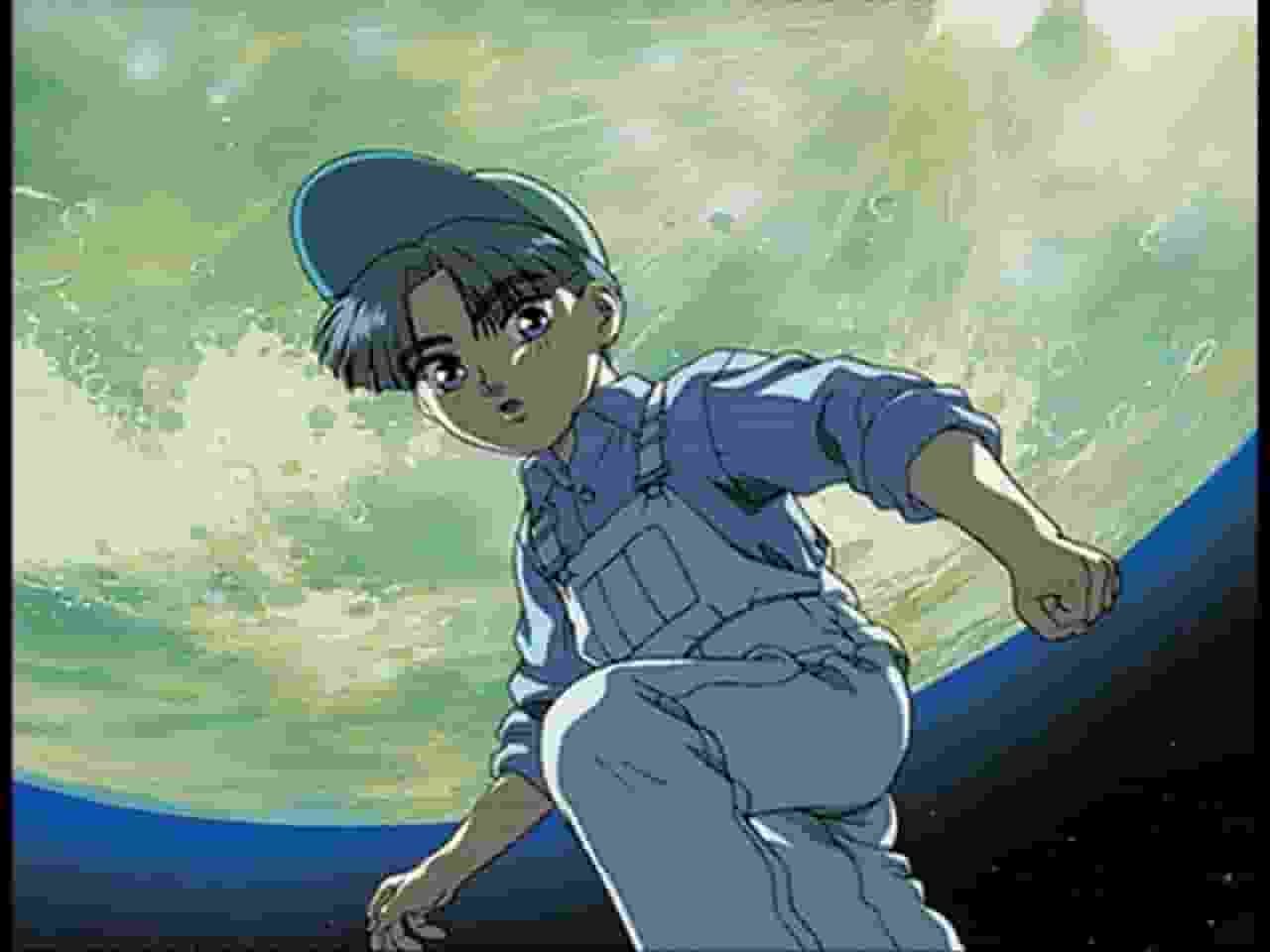"Tsuruhane" review: A moving story and beautiful visuals

"Tsuruhane": A historic masterpiece of Japanese animation■ Public Mediatheater ■ Original MediaAnime Original ■ Release dateJanuary 1, 1956 - January 1, 0000 ■ Number of EpisodesEpisode 1 ■ ProductionProduced by Kyodo Films and Nippon Animation Films. Produced by Koichiro Sakai and Soudamiya Yoshioka. ■ Story There was a young man and a puppy in a poor farmer's house. The young man worked hard but lived in poverty. One day, he helped a crane that had been hit by an arrow in the field and healed its wound. The crane flew away into the sky with joy. Winter came soon, and the young man was in trouble because he could not work because of the deep snow. One day, a beautiful girl came to the house with a shining woven cloth. The young man was surprised, but he gladly accepted the cloth and exchanged it for money in the capital. The young man used up all his money, and returned home to ask the girl to weave the cloth again. The girl listened sadly, but made sure not to look at the weaving room. The young man played every day, but he could not wait and looked into the weaving room through the gap in the shoji screen. There, a crane was weaving by plucking feathers one by one from its thinning wings. The surprised young man jumped into the scene. The exhausted crane tried to fly away. The young man threw the woven cloth at the crane, which turned into many feathers and returned to the crane's wings. The crane happily flew over the farmer's house and flew away. After that, the young man began to work hard and diligently. ■ Main staff・Produced by Kyodo Eigasha and Nippon Animation Eigasha ・Produced by Koichiro Sakasai and Soudamiya Yoshioka ・Screenplay by Kiji Tanaka ・Direction by Kiji Tanaka ・Composition by Hajime Morohashi, Yasuharu Nagai and Shiro Tsuchiya ・Animation by Hajime Morohashi, Yasuharu Nagai and Shiro Tsuchiya ・Background by Shigeru Hirata ・Cinematography by Akira Kubota ・Music by Hikaru Hayashi ■ Background and historical significance of the work"The Crane Wings" is a Japanese animated film released in 1956, and it has great historical significance. The film was co-produced by Kyodo Eigasha and Nippon Animation Eigasha, and was produced by Sakai Koichiro and Yoshioka Sodaya. The screenplay and direction were handled by Tanaka Kiji, while Morohashi Hajime, Nagai Taiji, and Tsuchiya Shiro participated in the composition and animation. Additionally, Hirata Shigeru was in charge of background design, Kubota Akira was in charge of photography, and Hayashi Hikaru was in charge of music. This film, created by this team of staff, has carved its name into the history of Japanese animated films. The film was released in 1956, a time when Japan was undergoing post-war reconstruction and society as a whole was seeking new culture and art. In this historical context, "The Crane Wings" moved many people by depicting a story based on a traditional Japanese folk tale in the new form of expression known as animation. In particular, the story of a young man from a poor farming family rescuing a crane and receiving a beautiful textile in return is said to have resonated deeply with the hearts of Japanese people at the time. ■ Details of the story and impressionsThe story of "The Crane's Wings" revolves around the interaction between a young man from a poor farming family and a crane. The young man saves the crane after he is hit by an arrow in the fields and heals his wound. The crane flies off into the sky in gratitude, but winter soon arrives and the young man is unable to work due to the deep snow. Meanwhile, a beautiful girl visits the young man's house with a shining piece of fabric. The young man exchanges the fabric for gold in the capital and achieves temporary prosperity. However, having used up all his money, the young man asks the girl to weave the cloth again. The girl makes the condition that he will not see the weaving workshop, but the young man cannot resist and peeks into the weaving workshop. There he sees the crane plucking feathers from its own wings to weave fabric. This scene is visually moving and leaves a strong impression on the audience. The scene where the young man throws the cloth back at the crane is particularly moving. The moment when the cloth turns back into the crane's feathers and the crane flies away again is a moving moment for the audience. The ending, in which the young man then starts working hard, teaches a moral lesson and conveys a message of hope and rebirth. This story is not just a reenactment of a folk tale, but contains profound content that questions humanity and ethics. ■Animation technology and art"Tsuruhane" was produced using the animation techniques of the 1950s, and its artistic beauty is particularly noteworthy. In particular, the scene in which the crane feathers are plucked one by one to make fabric is striking for its detailed drawings and beautiful colors. The background art also highlights Shigeru Hirata's skill, with realistic depictions of the snowy winter landscapes and the cityscape. The cinematography of Akira Kubota is also skillful, further enhancing the overall visuals. The music, composed by Hikaru Hayashi, also adds depth to the story. In particular, the music during the scene where the cranes take flight has the effect of elevating the audience's emotions. These technical elements come together to make "Tsuru no Hane" a visually and aurally excellent piece. ■ Evaluation and influence of the work"The Crane Wings" was highly acclaimed when it was released, and had a major influence on subsequent Japanese animated films. In particular, the technique of animating a story based on a folk tale influenced many subsequent works. Technically, it is also regarded as a work that shows the pinnacle of animation technology in the 1950s. This work has been highly praised at film festivals both in Japan and abroad, and in particular won a special prize at the Annecy International Animated Film Festival. This has earned "The Wings of the Crane" international recognition. From an educational point of view, the work has also been shown in many schools and used as teaching material to teach moral lessons to children. ■ Recommendations and how to watch"Tsuruhane" is an essential work for understanding the history of Japanese animation films, and is highly recommended for viewing at least once. It is a must-see for anyone with an interest in folklore and traditional Japanese culture, as well as anyone who wants to appreciate the beauty of 1950s animation technology. Currently, it is possible to purchase the film on DVD or Blu-ray. It may also be available on some video streaming services, so that is another option. It may also be shown in libraries or school audiovisual rooms, so that is also a good option. Related works and referencesOther works related to "Tsuruhane" include the animated films "The Tale of the Bamboo Cutter" and "Momotaro," which are also based on Japanese folk tales. These works also have in common the fact that they depict traditional Japanese stories through animation. Also, for those who are interested in the animation techniques of the 1950s, works such as "The Legend of the White Snake" and "Urashima Taro" are also recommended. As a reference, "History of Japanese Animation Films" by Yamaguchi Katsunori and Watanabe Yasushi, published by Planet, is extremely useful. This book provides a detailed account of the production background and evaluation of "Tsuruhane", which is useful for gaining a deeper understanding of the work. It also provides detailed explanations of the history and technology of other animation films, so if you are interested, be sure to pick it up. Conclusion"Tsuru no Hane" occupies an important place in the history of Japanese animation films, and its story and technical beauty are still loved by many people today. The humanity and ethics depicted through the interaction between the crane and a young man from a poor farming family deeply moves the audience. By watching this film, you will be able to rediscover the charm of traditional Japanese culture and the animation technology of the 1950s. We hope you will watch it at least once and experience the moving experience. |
>>: Review of "Mizuko no Tabi": A moving story of adventure and growth
Recommend
The final trailer of "Mulan: Rise of a Warrior" was released and will be released in theaters on October 3
The domestic animated film "Mulan: Rise of a...
A unique interpretation of the new Death Note! The latest trailer for the new musical of Death Note is released
The latest "DEATH NOTE" musical "D...
A thorough review of "We Are the Salarymen"! A realistic portrayal of office life and humor
"We Are the Salarymen Party": A classic...
The appeal and reviews of "Butlers: A Million Year Story": A thorough analysis of the ultimate butler anime
Butlers: A Thousand and Hundred Year Story: A tim...
The appeal and evaluation of "Goro": A deep review
Goro: A masterpiece of Japanese animation from th...
"Resident Evil: Infinite Darkness" Blu-ray & DVD disc set trailer, do you want to collect it?
Netflix's CG animation "Resident Evil: I...
Initial D2 movie confirmed to be directed by Andrew Lau, cast yet to be announced
According to Sina Entertainment Weibo, a new batc...
William Chan sings the theme song of "The Order of the Samurai" The film is adapted from the game "Onmyoji"
The fantasy film "The Order of the Samurai&q...
The 25th anniversary trailer of "Titanic" will be released on February 10
The classic movie "Titanic" released a ...
The Witcher game Geralt actor likes the "super version" Geralt very much: It's sad to see him leave
In the upcoming fourth season of Netflix's li...
The appeal and reviews of "Kazemakase Tsukikage Ran": You can't miss it!
Wind-driven Moonlight Orchid - Kazemakasetsukikag...
Netflix's "One Piece" live-action drama has begun production and the starring role is suspected to be leaked
Recently, a piece of suspected production informa...
Sonic the Hedgehog 3 screenwriter admits he planned to kill off Sonic's human friend Tom
The game-adapted movie "Sonic the Hedgehog 3...
The main art of the new TV animation of "The Prince of Tennis" for its 20th anniversary is released and will be broadcast in spring 2021
The new TV animation "New Tennis Prince Hyot...
Netflix announces the series list for next year, including a large number of game adaptations
Recently, the famous Twitter blogger Netflix Geek...









